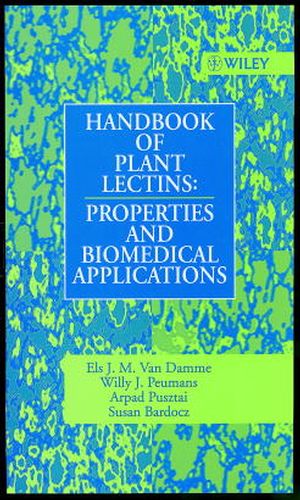Handbook of Plant Lectins: Properties and Biomedical ApplicationsISBN: 978-0-471-96445-2
Hardcover
466 pages
March 1998
 This is a Print-on-Demand title. It will be printed specifically to fill your order. Please allow an additional 10-15 days delivery time. The book is not returnable.
|
||||||
Plant lectins are extensively used as tools and as bioactiveproteins in different areas of biomedical and biological research.The Handbook of Plant Lectins provides a comprehensive yet conciseoverview of the biochemical properties, carbohydrate-bindingspecificity, biological activities and applications of most of thecurrently known plant lectins. This handbook consists of two majorsections: an introductory guide and a quick reference dictionary.Part I acquaints the newcomer to the lectin field with theessential information on lectins and their importance tobiomedicine:
* what are lectins?
* their carbohydrate-binding specificity
* effects on nutrition and immunology
* use in histochemistry
* application as therapeutic agents
Part II lists approximately 200 lectin entries in alphabeticalorder. Each entry deals with the lectin(s) of a particular plantand provides, (where known), details of:
* isolation and characterisation;
* sugar binding specificity;
* biological activities;
* applications;
* commercial availability; and,
* a bibliography.
Useful summary tables list lectins according to their specificity,thereby allowing the user to choose the best lectin for theirapplication. A list of suppliers is also provided. Handbook ofPlant Lectins will be of interest to biologists and biomedicalresearchers studying cell biology, cancer research, nutrition,immunology, pathology and physiology.
* what are lectins?
* their carbohydrate-binding specificity
* effects on nutrition and immunology
* use in histochemistry
* application as therapeutic agents
Part II lists approximately 200 lectin entries in alphabeticalorder. Each entry deals with the lectin(s) of a particular plantand provides, (where known), details of:
* isolation and characterisation;
* sugar binding specificity;
* biological activities;
* applications;
* commercial availability; and,
* a bibliography.
Useful summary tables list lectins according to their specificity,thereby allowing the user to choose the best lectin for theirapplication. A list of suppliers is also provided. Handbook ofPlant Lectins will be of interest to biologists and biomedicalresearchers studying cell biology, cancer research, nutrition,immunology, pathology and physiology.



